IP
-
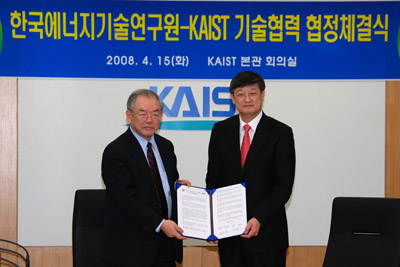 KAIST Inks Agreement with KERI for EEWS Technological Cooperation
KAIST concluded an agreement with the Korea Institute of Energy Research for technological cooperation in the research on the four global issues of energy, environment, water and sustainability (EEWS) on Tuesday (April 15).
The agreement was signed by KAIST President Nam-Pyo Suh and Moon-Hee Han, director of the Korea Institute of Energy Research at the KAIST.
The agreement calls for building a cooperative network for exchanges of personnel and information, and joint use of research facilities and equipment between the two institutions. Under the agreement, KAIST and KIER will also jointly conduct scientific researches.
When it comes to personnel exchange, KAIST will appoint researchers of KIER as adjunct professors of KAIST, while KIER will appoint KAIST professors as its adjunct researchers. Undergraduate students of KAIST will be given an opportunity to join government-commissioned projects and participate in an internship program of the institute.
2008.04.16 View 17521
KAIST Inks Agreement with KERI for EEWS Technological Cooperation
KAIST concluded an agreement with the Korea Institute of Energy Research for technological cooperation in the research on the four global issues of energy, environment, water and sustainability (EEWS) on Tuesday (April 15).
The agreement was signed by KAIST President Nam-Pyo Suh and Moon-Hee Han, director of the Korea Institute of Energy Research at the KAIST.
The agreement calls for building a cooperative network for exchanges of personnel and information, and joint use of research facilities and equipment between the two institutions. Under the agreement, KAIST and KIER will also jointly conduct scientific researches.
When it comes to personnel exchange, KAIST will appoint researchers of KIER as adjunct professors of KAIST, while KIER will appoint KAIST professors as its adjunct researchers. Undergraduate students of KAIST will be given an opportunity to join government-commissioned projects and participate in an internship program of the institute.
2008.04.16 View 17521 -
 KAIST Receiving Applications for Intelligent SoC Robot War
KAIST is receiving applications to participate in the 2008 Intelligent SoC Robot War through the annual contest"s homepage at www.socrobotwar.org. Application deadline is May 1.
The annual contest features battles between mechanical robots utilizing System on Chip (SoC) technology. The annual robot competition, which began in 2002, is scheduled for Oct. 15-19 this year at the Indian Hall of Convention & Exhibition Center (COEX) in southern Seoul.
The Intelligent SoC Robot War Contest has two sections, Tank Robot and Taekwon Robot. In the Tank Robot contest, robots in the form of tanks engage in duels with laser beams through visual recognition, wireless communication, and audio recognition. On the other hand, the Taekwon Robot contest is a hand-to-hand fight. The robots had to be capable of defending, recognizing the opponent, and attacking without external control.
Any team consisting of more than two people and under six undergraduate or graduate students are eligible to take part in the competition.
Prior to the contest, preliminary assessments and the final selection will be made between July and September.
2008.04.14 View 14479
KAIST Receiving Applications for Intelligent SoC Robot War
KAIST is receiving applications to participate in the 2008 Intelligent SoC Robot War through the annual contest"s homepage at www.socrobotwar.org. Application deadline is May 1.
The annual contest features battles between mechanical robots utilizing System on Chip (SoC) technology. The annual robot competition, which began in 2002, is scheduled for Oct. 15-19 this year at the Indian Hall of Convention & Exhibition Center (COEX) in southern Seoul.
The Intelligent SoC Robot War Contest has two sections, Tank Robot and Taekwon Robot. In the Tank Robot contest, robots in the form of tanks engage in duels with laser beams through visual recognition, wireless communication, and audio recognition. On the other hand, the Taekwon Robot contest is a hand-to-hand fight. The robots had to be capable of defending, recognizing the opponent, and attacking without external control.
Any team consisting of more than two people and under six undergraduate or graduate students are eligible to take part in the competition.
Prior to the contest, preliminary assessments and the final selection will be made between July and September.
2008.04.14 View 14479 -
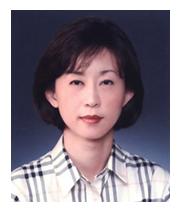 Prof. Lee Listed on Marquis Who's Who
Professor Lee Ji-hyun of the Graduate School of Culture Technology at KAIST was registered to Marquis Who"s Who, known as one of the world"s three leading biographical dictionaries.
Prof. Lee"s biography was published in the 25th anniversary edition of "Marquis Who"s Who in the World 2008."
Lee"s research interests are the color and culture, computer-supported collaborative design, creative design, evolutionary systems in design, formal models of design process, representation and reasoning in design and visualization for design information.
Lee has published about 30 papers in science journals and for scholastic conferences. She is also a participating professor at KAIST Institute for Entertainment Engineering. Before joining KAIST in 2007, she was an assistant professor at the Department of Digital Media Design and Graduate School of Computational Design, the National Yunlin University of Science & Technology (NYUST) in Taiwan starting from 2002.
She received her Ph.D. from the School of Architecture (Computational Design) at Carnegie Mellon University in 2002. She graduated from the Department of Housing & Interior Design at Yonsei University in Seoul in 1991 and received her M.S. from the same university in 1993.
2008.02.14 View 17209
Prof. Lee Listed on Marquis Who's Who
Professor Lee Ji-hyun of the Graduate School of Culture Technology at KAIST was registered to Marquis Who"s Who, known as one of the world"s three leading biographical dictionaries.
Prof. Lee"s biography was published in the 25th anniversary edition of "Marquis Who"s Who in the World 2008."
Lee"s research interests are the color and culture, computer-supported collaborative design, creative design, evolutionary systems in design, formal models of design process, representation and reasoning in design and visualization for design information.
Lee has published about 30 papers in science journals and for scholastic conferences. She is also a participating professor at KAIST Institute for Entertainment Engineering. Before joining KAIST in 2007, she was an assistant professor at the Department of Digital Media Design and Graduate School of Computational Design, the National Yunlin University of Science & Technology (NYUST) in Taiwan starting from 2002.
She received her Ph.D. from the School of Architecture (Computational Design) at Carnegie Mellon University in 2002. She graduated from the Department of Housing & Interior Design at Yonsei University in Seoul in 1991 and received her M.S. from the same university in 1993.
2008.02.14 View 17209 -
 Intelligent SoC Robot War 2007 Has Finale
Kyung Hee University’s “Sandi2007” and “Triple K” of Korea University of Technology and Education and Chungbuk National University were victorious in the Tank Robot category and the Taekwon Robot categories of the 6th Robot War Contest hosted by Korea Advanced Institute of Science and Technology (KAIST).
Boldly entitled “07 Intelligent SoC Robot War”, KAIST hosted its 6th Robot War Contest. In this contest, battles between mechanical robots utilizing System on Chip (SoC) technology are fought. The first Robot War contest was held in 2002. Before the actual contest from October 18th to 21st, preliminary assessments and the final selection was administered in August.
The Intelligent SoC Robot War Contest has two sections called Tank Robot and Taekwon Robot. The Tank Robot contest has robots in the form of tanks duel with laser beams through visual recognition, wireless communication, and audio recognition. On the other hand, the Taekwon Robot contest is a hand-to-hand fight. The robots had to be capable of defending, recognizing the opponent, and attacking without external control.
The 15 teams of the Tank Robot section and the 10 teams of the Taekwon Robot section that passed through the preliminary selections participated in the final battles for 3 days starting on October 18th. The Tank Robot category winner “Sandi2007” showed great ability in visual sensing and the Taekwon Robot category winner “Triple K” had effective arm and leg combinations that eventually led the team to victory.
Kyung Hee University’s “Sandi2007” received 2 million Korean Won as the grand prize along with a special recognition from the Prime Minister, while “Triple K” received 1 million Korean Won with a special recognition from the Secretary of the Ministry of Commerce, Industry and Energy (MOCIE).
The Intelligent SoC Robot War contest was part of the 2007 International Robot Contest (IRC 2007) which was organized by the Center for Robot Industry Promotion (CRIP) and held at Convention & Exhibition Center (COEX) Indian Hall. The individual contests included 8 competitions: Grand Challenge, Robotpiad, Humanoid Robot Contest, Robofest, Intelligent SoC Robot War, FIRA Challenge Cup, Robot Festival, and URC Robot Contest.By KAIST Herald on November, 2007
2007.12.21 View 15492
Intelligent SoC Robot War 2007 Has Finale
Kyung Hee University’s “Sandi2007” and “Triple K” of Korea University of Technology and Education and Chungbuk National University were victorious in the Tank Robot category and the Taekwon Robot categories of the 6th Robot War Contest hosted by Korea Advanced Institute of Science and Technology (KAIST).
Boldly entitled “07 Intelligent SoC Robot War”, KAIST hosted its 6th Robot War Contest. In this contest, battles between mechanical robots utilizing System on Chip (SoC) technology are fought. The first Robot War contest was held in 2002. Before the actual contest from October 18th to 21st, preliminary assessments and the final selection was administered in August.
The Intelligent SoC Robot War Contest has two sections called Tank Robot and Taekwon Robot. The Tank Robot contest has robots in the form of tanks duel with laser beams through visual recognition, wireless communication, and audio recognition. On the other hand, the Taekwon Robot contest is a hand-to-hand fight. The robots had to be capable of defending, recognizing the opponent, and attacking without external control.
The 15 teams of the Tank Robot section and the 10 teams of the Taekwon Robot section that passed through the preliminary selections participated in the final battles for 3 days starting on October 18th. The Tank Robot category winner “Sandi2007” showed great ability in visual sensing and the Taekwon Robot category winner “Triple K” had effective arm and leg combinations that eventually led the team to victory.
Kyung Hee University’s “Sandi2007” received 2 million Korean Won as the grand prize along with a special recognition from the Prime Minister, while “Triple K” received 1 million Korean Won with a special recognition from the Secretary of the Ministry of Commerce, Industry and Energy (MOCIE).
The Intelligent SoC Robot War contest was part of the 2007 International Robot Contest (IRC 2007) which was organized by the Center for Robot Industry Promotion (CRIP) and held at Convention & Exhibition Center (COEX) Indian Hall. The individual contests included 8 competitions: Grand Challenge, Robotpiad, Humanoid Robot Contest, Robofest, Intelligent SoC Robot War, FIRA Challenge Cup, Robot Festival, and URC Robot Contest.By KAIST Herald on November, 2007
2007.12.21 View 15492 -
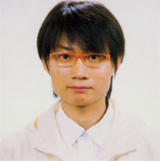 Ki-Won Lee Receives Best Student Paper Award
Ki-Won Lee Receives Best Student Paper Award
Ki-Won Lee, a doctoral student of Materials Science & Engineering, has received the Best Student Paper Award ‘Motorola Fellowship Award’ at 2007 Electronic Components and Technology Conference (ECTC).
Lee’s paper is about a new bonding process of anisotropic conductive film using ultrasonic wave, which applies ultrasonic wave, instead of thermal compression, at the room temperature to reduce the process time from ten to three seconds.
The recipients of Motorola Fellowship Award are selected by IEEE Components, Packaging and Manufacturing Technology Society, and Motorola awards special scholarship to recipients. The ECTC is the world’s largest yearly conference concerning electronic packaging technologies with more than 1,000 attendees and more than 300 presented papers.
2007.07.02 View 18560
Ki-Won Lee Receives Best Student Paper Award
Ki-Won Lee Receives Best Student Paper Award
Ki-Won Lee, a doctoral student of Materials Science & Engineering, has received the Best Student Paper Award ‘Motorola Fellowship Award’ at 2007 Electronic Components and Technology Conference (ECTC).
Lee’s paper is about a new bonding process of anisotropic conductive film using ultrasonic wave, which applies ultrasonic wave, instead of thermal compression, at the room temperature to reduce the process time from ten to three seconds.
The recipients of Motorola Fellowship Award are selected by IEEE Components, Packaging and Manufacturing Technology Society, and Motorola awards special scholarship to recipients. The ECTC is the world’s largest yearly conference concerning electronic packaging technologies with more than 1,000 attendees and more than 300 presented papers.
2007.07.02 View 18560 -
 KAIST To Open Cultural Activity Classes
KAIST To Open Cultural Activity Classes
KAIST will open classes of Cultural Activity (CA) this fall semester, and many of them will be instructed by students.
CA classes are regular classes opened to create a better atmosphere on campus and broaden students’ sociality and provide opportunities of diverse experiences to enhance students’ qualities as elite scientists. All classes will be provided at night or weekend to allow students to take part in cultural activities of their interests.
Total 21 classes, such as animation, photo-taking, electronic guitar, classic guitar, Ocarina, Inline skate, Haedong kendo, weight training, yoga, Tae-keuk-kwon, aerobic, recreation, hacking, drum playing, etc., will be provided, and 15 of them, such as animation, photo-taking, electronic guitar, etc., will be lectured by students. The students-lectured classes have been selected after thorough examination of lecture plans.
Leadership Mileage Points (LMP) will be offered to students both of lecturing and attending CA classes and, in the case of freshmen, a credit will be admitted for the obligatory subject of leadership demanding two credits. A larger number of students than the enrollment capacity have applied for the classes within a day. CA classes are expected to change campus life in KAIST.
Meanwhile, students will be given LMPs for each of their activities, such as humanity/ leadership lectures, on-campus voluntary services, off-campus voluntary services, mind and body training, exchange student activity, field experiences, etc., and will be issued a leadership certificate graded as ‘silver’, ‘gold’, ‘platinum’ and ‘diamond’ according to the accumulative LMPs in graduation. A personal certificate describing the details of on-campus activities by students will also be issued to help students’ employment activities.
KAIST has recently introduced a new two-dimensional admission policy that evaluates applicants’ humanities as well as academic achievements, based on President Suh’s judgment that students with expertise but no humanity will not be able to create the bright future of Korea. The LMP has the same purport as the new policy in that enrolled students are also to be evaluated in two aspects - humanity and academic achievements, and will bring a new paradigm to Korean education.
2007.06.08 View 12732
KAIST To Open Cultural Activity Classes
KAIST To Open Cultural Activity Classes
KAIST will open classes of Cultural Activity (CA) this fall semester, and many of them will be instructed by students.
CA classes are regular classes opened to create a better atmosphere on campus and broaden students’ sociality and provide opportunities of diverse experiences to enhance students’ qualities as elite scientists. All classes will be provided at night or weekend to allow students to take part in cultural activities of their interests.
Total 21 classes, such as animation, photo-taking, electronic guitar, classic guitar, Ocarina, Inline skate, Haedong kendo, weight training, yoga, Tae-keuk-kwon, aerobic, recreation, hacking, drum playing, etc., will be provided, and 15 of them, such as animation, photo-taking, electronic guitar, etc., will be lectured by students. The students-lectured classes have been selected after thorough examination of lecture plans.
Leadership Mileage Points (LMP) will be offered to students both of lecturing and attending CA classes and, in the case of freshmen, a credit will be admitted for the obligatory subject of leadership demanding two credits. A larger number of students than the enrollment capacity have applied for the classes within a day. CA classes are expected to change campus life in KAIST.
Meanwhile, students will be given LMPs for each of their activities, such as humanity/ leadership lectures, on-campus voluntary services, off-campus voluntary services, mind and body training, exchange student activity, field experiences, etc., and will be issued a leadership certificate graded as ‘silver’, ‘gold’, ‘platinum’ and ‘diamond’ according to the accumulative LMPs in graduation. A personal certificate describing the details of on-campus activities by students will also be issued to help students’ employment activities.
KAIST has recently introduced a new two-dimensional admission policy that evaluates applicants’ humanities as well as academic achievements, based on President Suh’s judgment that students with expertise but no humanity will not be able to create the bright future of Korea. The LMP has the same purport as the new policy in that enrolled students are also to be evaluated in two aspects - humanity and academic achievements, and will bring a new paradigm to Korean education.
2007.06.08 View 12732 -
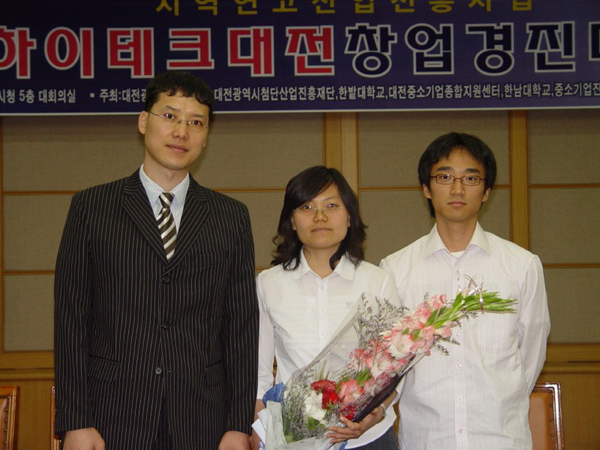 KAIST Students Wins Gold Prize at Technical Idea Contest
KAIST Students Wins Gold Prize at Technical Idea Contest
- Receive the gold prize at the 3rd High-Tech Daejeon Technical Idea Contest for Company Establishment- For the development of a new system to convert complex web page addresses to short and meaningful addresses
Sang-Hoon Kim, Song-Hwa Chae and Dong-Hun Lee of Chemical and Biomolecular Engineering won the gold prize at the prospective company establishment part in the 3rd High-Tech Daejeon Technical Idea Contest for Company Establishment on May 21 for their valuable development of ‘Web Page Address Clipping System’.
So far, simplified web page addresses include special characters, which make the addresses long and complex. That is, the current address simplification service combines meaningless random words and numerals to create addresses when web page addresses are entered. In this case, the addresses are not easy to share with others and reuse several times since they are difficult to memorize.
However, the ‘Web Page Address Clipping System’ shortens meaningless long addresses. In addition, the improved address simplification service will provide user’s own addresses, and statistics and ranking to clipping addresses frequently used.
Based on this technology, Kim and Chae are now preparing to open a company called ‘URLClip’ under the auspice of Professor Tae-Yong Yang and Researcher In-Soo Kim, KAIST Entrepreneurship Center. They are also expanding their service areas onto clipping library for individual users, host name services for enterprises, etc. and developing tool bar, RSS service (RSS is an acronym of RDF (or Rich) Site Summary. It refers to a service that automatically and easily provides frequently updated contents such as news and blogs to users), etc. to improve users’ conveniences.
URLClip (http://www.urlclip.net) is a next generation portal site, which is expected to provide a variety of individualized services based on Web Page Address Clipping Service and to be used by many enterprises as well as individual users who wish to enhance their access to useful contents.
“Chemical & Biomolecular Engineering Professor Sun-Won Park has offered lots of helps and supports, so I could decide to commercialize the developed technologies. The application of this technology to real life will allow further comfortable uses of internet to users,” Kim said.
Narae Team received the best prize last April at the 2nd Pre-Star Venture Company-Opening Contest hosted by KAIST and Hanbat Univeristy, and the technology is pending a patent application.
Inquiry:Sang-Hoon Kim, Dep. of Chemical and Biomolecular Engineering, H.P. 010-4754-9947Song-Hwa Chae, Dep. of Chemical and Biomolecular Engineering, H.P. 010-7223-9947Home page: http://www.urlclip.netEmail: urlclip@urlclip.net
2007.06.05 View 16560
KAIST Students Wins Gold Prize at Technical Idea Contest
KAIST Students Wins Gold Prize at Technical Idea Contest
- Receive the gold prize at the 3rd High-Tech Daejeon Technical Idea Contest for Company Establishment- For the development of a new system to convert complex web page addresses to short and meaningful addresses
Sang-Hoon Kim, Song-Hwa Chae and Dong-Hun Lee of Chemical and Biomolecular Engineering won the gold prize at the prospective company establishment part in the 3rd High-Tech Daejeon Technical Idea Contest for Company Establishment on May 21 for their valuable development of ‘Web Page Address Clipping System’.
So far, simplified web page addresses include special characters, which make the addresses long and complex. That is, the current address simplification service combines meaningless random words and numerals to create addresses when web page addresses are entered. In this case, the addresses are not easy to share with others and reuse several times since they are difficult to memorize.
However, the ‘Web Page Address Clipping System’ shortens meaningless long addresses. In addition, the improved address simplification service will provide user’s own addresses, and statistics and ranking to clipping addresses frequently used.
Based on this technology, Kim and Chae are now preparing to open a company called ‘URLClip’ under the auspice of Professor Tae-Yong Yang and Researcher In-Soo Kim, KAIST Entrepreneurship Center. They are also expanding their service areas onto clipping library for individual users, host name services for enterprises, etc. and developing tool bar, RSS service (RSS is an acronym of RDF (or Rich) Site Summary. It refers to a service that automatically and easily provides frequently updated contents such as news and blogs to users), etc. to improve users’ conveniences.
URLClip (http://www.urlclip.net) is a next generation portal site, which is expected to provide a variety of individualized services based on Web Page Address Clipping Service and to be used by many enterprises as well as individual users who wish to enhance their access to useful contents.
“Chemical & Biomolecular Engineering Professor Sun-Won Park has offered lots of helps and supports, so I could decide to commercialize the developed technologies. The application of this technology to real life will allow further comfortable uses of internet to users,” Kim said.
Narae Team received the best prize last April at the 2nd Pre-Star Venture Company-Opening Contest hosted by KAIST and Hanbat Univeristy, and the technology is pending a patent application.
Inquiry:Sang-Hoon Kim, Dep. of Chemical and Biomolecular Engineering, H.P. 010-4754-9947Song-Hwa Chae, Dep. of Chemical and Biomolecular Engineering, H.P. 010-7223-9947Home page: http://www.urlclip.netEmail: urlclip@urlclip.net
2007.06.05 View 16560 -
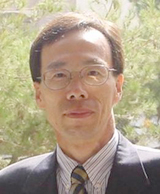 Professor Yang Named Recipient of Dupont Science & Technology Award
Professor Yang Named Recipient of Dupont Science & Technology Award
- Named as the recipient of Dupont Science & Technology Award of 2007- In recognition of his development of optical?bio-functional photonic crystal structures through Self-assembly of nanoparticles
Seung-Man Yang, a professor of Chemical and Biomolecular Engineering of KAIST (President Nam Pyo Suh) and the president of the National Creative Research Initiatives Center for Photon and Fluid Integrated Circuit by the Ministry of Science and Technology, has been named as the recipient of Dupont Science & Technology Award.
Dupont Korea, associate of Dupont, a world-class science firm, has established and conferred ‘Dupont Science & Technology Award’ since 2002 to promote basic sciences and industrial development of Korea. Dupont Science & Technology Awards are awarded to scientists of universities or state-run institutes who have made outstanding R&D achievements in the fields of Chemistry, Chemical Engineering, Material Science and Material Engineering within five years. Dupont Korea announced on May 2, 2007 that Professor Yang is the recipient of the award this year, following the strict examination by the Koran Academy of Science and Technology (KAST).
The reason for the award is Professor Yang’s development of prototype optical?bio-functional photonic crystal structures that can process a huge amount of data, resulting from a study that has discovered the principle of Self-assembly where multifunctional nanoparticles are manufactured and assembled for themselves.
Professor Yang’s recent research result about photon structures and nano patterns was published by Nature (February 2, 2006 edition); posted on Heart-Cut, the portal site of the American Chemistry Society (ACS), as highlight paper two times (November 4, 2002 and May 1, 2006); and introduced at Research/Researcher of MRS Bulletin by the U.S. Material Research Society (MRS) as main paper in December 2003. Professor Yang is very famous in Korea and abroad for the excellences of his research achievements and has made request seminars at Harvard University, University of Wisconsin, Caltech, University of California, etc. He is also invited speaker and session organizer of the MRS and the SPIE.
2007.05.08 View 20057
Professor Yang Named Recipient of Dupont Science & Technology Award
Professor Yang Named Recipient of Dupont Science & Technology Award
- Named as the recipient of Dupont Science & Technology Award of 2007- In recognition of his development of optical?bio-functional photonic crystal structures through Self-assembly of nanoparticles
Seung-Man Yang, a professor of Chemical and Biomolecular Engineering of KAIST (President Nam Pyo Suh) and the president of the National Creative Research Initiatives Center for Photon and Fluid Integrated Circuit by the Ministry of Science and Technology, has been named as the recipient of Dupont Science & Technology Award.
Dupont Korea, associate of Dupont, a world-class science firm, has established and conferred ‘Dupont Science & Technology Award’ since 2002 to promote basic sciences and industrial development of Korea. Dupont Science & Technology Awards are awarded to scientists of universities or state-run institutes who have made outstanding R&D achievements in the fields of Chemistry, Chemical Engineering, Material Science and Material Engineering within five years. Dupont Korea announced on May 2, 2007 that Professor Yang is the recipient of the award this year, following the strict examination by the Koran Academy of Science and Technology (KAST).
The reason for the award is Professor Yang’s development of prototype optical?bio-functional photonic crystal structures that can process a huge amount of data, resulting from a study that has discovered the principle of Self-assembly where multifunctional nanoparticles are manufactured and assembled for themselves.
Professor Yang’s recent research result about photon structures and nano patterns was published by Nature (February 2, 2006 edition); posted on Heart-Cut, the portal site of the American Chemistry Society (ACS), as highlight paper two times (November 4, 2002 and May 1, 2006); and introduced at Research/Researcher of MRS Bulletin by the U.S. Material Research Society (MRS) as main paper in December 2003. Professor Yang is very famous in Korea and abroad for the excellences of his research achievements and has made request seminars at Harvard University, University of Wisconsin, Caltech, University of California, etc. He is also invited speaker and session organizer of the MRS and the SPIE.
2007.05.08 View 20057 -
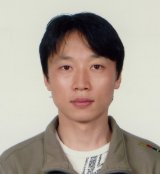 A doctorate of Mechanical Engineering Named Recipient of Best Student Paper Award at International Society
Seung-Min Ryu, a doctorate of Mechanical Engineering under the supervision of Professor Dong-Yul Yang, has been named as a recipient of the best student paper award of the Society for Information Display (SID).
The title of the paper is ‘the study on the fabrication of super-high resolution cathode separators by X-ray lithography processes’. He proposed at this paper the fabrication of 12 micron-thick cathode separators, which can fabricate further delicate separators than the current 50 micron-thick commercial PDP separators, thereby significantly improving the resolution of PDPs in the future.
Ryu will make an oral presentation on this paper and win the award at the SID conference, which will take place in the U.S. for six days from May 20.
2007.04.23 View 16213
A doctorate of Mechanical Engineering Named Recipient of Best Student Paper Award at International Society
Seung-Min Ryu, a doctorate of Mechanical Engineering under the supervision of Professor Dong-Yul Yang, has been named as a recipient of the best student paper award of the Society for Information Display (SID).
The title of the paper is ‘the study on the fabrication of super-high resolution cathode separators by X-ray lithography processes’. He proposed at this paper the fabrication of 12 micron-thick cathode separators, which can fabricate further delicate separators than the current 50 micron-thick commercial PDP separators, thereby significantly improving the resolution of PDPs in the future.
Ryu will make an oral presentation on this paper and win the award at the SID conference, which will take place in the U.S. for six days from May 20.
2007.04.23 View 16213 -
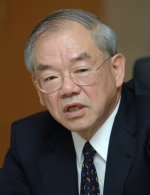 President Nam-Pyo Suh Receives Lifetime Achievement Award from SPE
President Nam-Pyo Suh has been selected as a recipient of the Lifetime Achievement Award by the Society of Plastic Engineers (SPE).
The SPE is the largest professional organization that promotes polymer-related R&D.
The SPE announced that it recognizes President Suh’s many contributions to the field of polymer processing. President Suh established the first university/industry cooperative research program at MIT known as the MIT-Industry Polymer Processing Program, which became a model in establishing similar programs at many other universities by NSF. Among the many new materials, products and manufacturing processes invented by him are: Microcellular plastics, known as MuCell and used commercially worldwide, USM high pressure foam molding technology, electrostatic charge-decay NDE technique for polymeric materials, and foam/straight plastic lamination process (a major industrial product).
2007.04.12 View 14862
President Nam-Pyo Suh Receives Lifetime Achievement Award from SPE
President Nam-Pyo Suh has been selected as a recipient of the Lifetime Achievement Award by the Society of Plastic Engineers (SPE).
The SPE is the largest professional organization that promotes polymer-related R&D.
The SPE announced that it recognizes President Suh’s many contributions to the field of polymer processing. President Suh established the first university/industry cooperative research program at MIT known as the MIT-Industry Polymer Processing Program, which became a model in establishing similar programs at many other universities by NSF. Among the many new materials, products and manufacturing processes invented by him are: Microcellular plastics, known as MuCell and used commercially worldwide, USM high pressure foam molding technology, electrostatic charge-decay NDE technique for polymeric materials, and foam/straight plastic lamination process (a major industrial product).
2007.04.12 View 14862 -
 Best Academic Award to Prof. Huen Lee
Professor Huen Lee, Department of Chemical and Biomolecular Engineering, received the Best Prize of KAIST Academic Awards at the 36th anniversary ceremony of KAIST.
Professor Lee has published 43 international papers and 12 domestic papers for the past five years and achieved world’s distinguished academic performances such as the development of hydrogen storage technologies, the discovery of the principle on carbon dioxide-methane hydrate swapping, etc.
Professor Lee published his paper on methane hydrate at Science in 2003, and Nature introduced his paper on hydrate storage technologies as ‘highlight research’ in 2005, commenting his research as a landmark performance to pave ways for the development of future hydrogen energy. His discovery on ‘the principle of carbon dioxide-methane hydrate swapping’, published by PNAS in 2006, also gained huge attraction across the world as one of the promising technologies that can solve energy problem and global warming crisis simultaneously.
Meanwhile, the rest of the awardees of 2007 are as follows:
- Academic Award: Professor Jongkyeong Chung, Dep. of Biological SciencesAssociate professor Changok Lee, Dep. of MathematicsAssociate professor Sangkyu Kim, Dep. of ChemistryProfessor Dae-gab Gweon, Dep. of Mechanical Engineering
- Creative Lecture Award: Associate professor Jaehung Han, Dep. of Aerospace Engineering
- Excellent Lecture Award: Assistant profess Bong Gwan Jun, School of Humanities & Social Science Professor Joonho Choe, Dep. of Biological Sciences Professor Changwon Kang, Dep. of Biological Sciences Professor Seunghyup Yoo, Div. of Electrical Engineering Associate professor Otfried Cheong, Div. of Computer Science Professor Hoe Kyung Lee, Graduate School of Finance
- Contribution Award: Professor Sung Chul Shin, Dep. of Physics Professor Bowon Kim, Graduate School of Culture Technology Professor Jisoo Kim, Graduate School of Finance
- International Cooperation Best Award: Professor Hyung Suck Cho, Dep. of Mechanical Engineering
- International Cooperation Award: Professor Kunpyo Lee, Dep. of Industrial Design Professor Soon Hyung Hong, Dep. of Materials Science & Engineering Professor Sungjoo Park, Graduate School of Culture Technology
2007.03.19 View 19697
Best Academic Award to Prof. Huen Lee
Professor Huen Lee, Department of Chemical and Biomolecular Engineering, received the Best Prize of KAIST Academic Awards at the 36th anniversary ceremony of KAIST.
Professor Lee has published 43 international papers and 12 domestic papers for the past five years and achieved world’s distinguished academic performances such as the development of hydrogen storage technologies, the discovery of the principle on carbon dioxide-methane hydrate swapping, etc.
Professor Lee published his paper on methane hydrate at Science in 2003, and Nature introduced his paper on hydrate storage technologies as ‘highlight research’ in 2005, commenting his research as a landmark performance to pave ways for the development of future hydrogen energy. His discovery on ‘the principle of carbon dioxide-methane hydrate swapping’, published by PNAS in 2006, also gained huge attraction across the world as one of the promising technologies that can solve energy problem and global warming crisis simultaneously.
Meanwhile, the rest of the awardees of 2007 are as follows:
- Academic Award: Professor Jongkyeong Chung, Dep. of Biological SciencesAssociate professor Changok Lee, Dep. of MathematicsAssociate professor Sangkyu Kim, Dep. of ChemistryProfessor Dae-gab Gweon, Dep. of Mechanical Engineering
- Creative Lecture Award: Associate professor Jaehung Han, Dep. of Aerospace Engineering
- Excellent Lecture Award: Assistant profess Bong Gwan Jun, School of Humanities & Social Science Professor Joonho Choe, Dep. of Biological Sciences Professor Changwon Kang, Dep. of Biological Sciences Professor Seunghyup Yoo, Div. of Electrical Engineering Associate professor Otfried Cheong, Div. of Computer Science Professor Hoe Kyung Lee, Graduate School of Finance
- Contribution Award: Professor Sung Chul Shin, Dep. of Physics Professor Bowon Kim, Graduate School of Culture Technology Professor Jisoo Kim, Graduate School of Finance
- International Cooperation Best Award: Professor Hyung Suck Cho, Dep. of Mechanical Engineering
- International Cooperation Award: Professor Kunpyo Lee, Dep. of Industrial Design Professor Soon Hyung Hong, Dep. of Materials Science & Engineering Professor Sungjoo Park, Graduate School of Culture Technology
2007.03.19 View 19697 -
 Professor Seong-Ihl Woo Develops New High-Speed Research Method
Professor Seong-Ihl Woo Develops New High-Speed Research Method
Reduce research periods and expenses for thin film materials several ten times
Posted on the online version of Proceedings of National Academy of Sciences of the United States of America (PNAS) on January 9
A team led by Seong-Ihl Woo, a professor of KAIST Department of Chemical & Biomolecular Engineering and the director of the Center for Ultramicrochemical Process Systems, has developed a high-speed research method that can maximize research performances and posted the relevant contents on the online version of Proceedings of National Academy of Sciences of the United States of America (PNAS), a distinguished scientific journal, on January 9, 2007.
Professor Woo’s team has developed a high-speed research method that can fabricate several tens or several thousands of thin films with different compositions (mixing ratio) at the same time and carry out structural analysis and performance evaluation more than ten times faster and accurately, which leads to the shortening of the research processes of thin film materials. This is an epoch-making method that can reduce research periods and expenses several ten times or more, compared to the previous methods.
The qualities of final products of electronic materials, displays, and semi-conductors depend on the features of thin film materials. Averagely, it takes about two weeks or longer to fabricate a functional thin film and analyze and evaluate its performances. In order to fabricate thin film materials in need successfully, more than several thousand times of tests are required.
The existing thin film-fabricating equipment is expensive one demanding high-degree vacuum, such as chemical vapor deposition, sputtering, physical vapor deposition, laser evaporation, and so on. In order to fabricate thin films of various compositions with this equipment, a several million won-worth target (solid-state raw material) and precursors (volatile organic metal compound) pricing several hundreds won per gram are required. Therefore, huge amount of experiment expense is demanded for fabrication of several ten thousands of thin films with various compositions.
Professor Woo’s team has developed ‘combinatorial droplet chemical deposition’ equipment, which does not demand high-degree vacuum and is automated by computers and robots, by using a new high-speed research measure. The equipment is priced at about 1/5 of the existing equipment and easy for maintenance.
This equipment uses cheap reagents, instead of expensive raw materials. Reagents necessary to form required compositions are dissolved in water or proper solvents, and then applied by high frequencies to make several micrometer-scaled droplets (fine liquid droplet). Theses droplets are moved by nitrogen and dropped onto a substrate, which is to be fabricated into a thin film, and then subsequent thermal treatment is applied to the substrate to fabricate a thin film of required composition. At this moment, several tens or several hundreds of thin films with various compositions can be fabricated at the same time by reducing the size of thin film specimens into millimeter scale with the use of shade mask and adjusting vaporization time with masks, the moving speed of which can be adjusted. The expenses for materials necessary for the fabrication of thin films with this equipment amount to several ten thousands won per 100 grams, which is in the range of 1/100 and 1/10 of the previous methods, and the research period can be shortened into one of several tenth.
“If this new method is applied to the development of elements in the fields of core energy, material and health, which have not been discovered by the existing research methods so far, as well as researches in thin film material field, substantial effects will be brought,” said Professor Woo.
‘Combinatorial droplet chemical vaporization’ equipment is pending a domestic patent application and international patent applications at Japan and Germany. This equipment will be produced by order and provided to general researchers.
2007.02.02 View 18010
Professor Seong-Ihl Woo Develops New High-Speed Research Method
Professor Seong-Ihl Woo Develops New High-Speed Research Method
Reduce research periods and expenses for thin film materials several ten times
Posted on the online version of Proceedings of National Academy of Sciences of the United States of America (PNAS) on January 9
A team led by Seong-Ihl Woo, a professor of KAIST Department of Chemical & Biomolecular Engineering and the director of the Center for Ultramicrochemical Process Systems, has developed a high-speed research method that can maximize research performances and posted the relevant contents on the online version of Proceedings of National Academy of Sciences of the United States of America (PNAS), a distinguished scientific journal, on January 9, 2007.
Professor Woo’s team has developed a high-speed research method that can fabricate several tens or several thousands of thin films with different compositions (mixing ratio) at the same time and carry out structural analysis and performance evaluation more than ten times faster and accurately, which leads to the shortening of the research processes of thin film materials. This is an epoch-making method that can reduce research periods and expenses several ten times or more, compared to the previous methods.
The qualities of final products of electronic materials, displays, and semi-conductors depend on the features of thin film materials. Averagely, it takes about two weeks or longer to fabricate a functional thin film and analyze and evaluate its performances. In order to fabricate thin film materials in need successfully, more than several thousand times of tests are required.
The existing thin film-fabricating equipment is expensive one demanding high-degree vacuum, such as chemical vapor deposition, sputtering, physical vapor deposition, laser evaporation, and so on. In order to fabricate thin films of various compositions with this equipment, a several million won-worth target (solid-state raw material) and precursors (volatile organic metal compound) pricing several hundreds won per gram are required. Therefore, huge amount of experiment expense is demanded for fabrication of several ten thousands of thin films with various compositions.
Professor Woo’s team has developed ‘combinatorial droplet chemical deposition’ equipment, which does not demand high-degree vacuum and is automated by computers and robots, by using a new high-speed research measure. The equipment is priced at about 1/5 of the existing equipment and easy for maintenance.
This equipment uses cheap reagents, instead of expensive raw materials. Reagents necessary to form required compositions are dissolved in water or proper solvents, and then applied by high frequencies to make several micrometer-scaled droplets (fine liquid droplet). Theses droplets are moved by nitrogen and dropped onto a substrate, which is to be fabricated into a thin film, and then subsequent thermal treatment is applied to the substrate to fabricate a thin film of required composition. At this moment, several tens or several hundreds of thin films with various compositions can be fabricated at the same time by reducing the size of thin film specimens into millimeter scale with the use of shade mask and adjusting vaporization time with masks, the moving speed of which can be adjusted. The expenses for materials necessary for the fabrication of thin films with this equipment amount to several ten thousands won per 100 grams, which is in the range of 1/100 and 1/10 of the previous methods, and the research period can be shortened into one of several tenth.
“If this new method is applied to the development of elements in the fields of core energy, material and health, which have not been discovered by the existing research methods so far, as well as researches in thin film material field, substantial effects will be brought,” said Professor Woo.
‘Combinatorial droplet chemical vaporization’ equipment is pending a domestic patent application and international patent applications at Japan and Germany. This equipment will be produced by order and provided to general researchers.
2007.02.02 View 18010